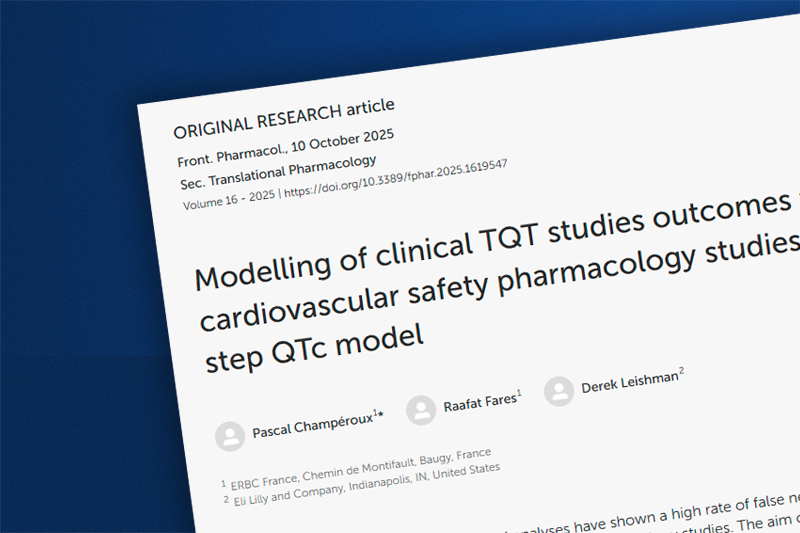

 Pascal Champéroux1
Pascal Champéroux1
 Raafat Fares1
Raafat Fares1
 Derek Leishman2
Derek Leishman2
1 ERBC France, Chemin de Montifault, Baugy, France
2 Eli Lilly and Company, Indianapolis, IN, United States
Introduction: Retrospective translational analyses have shown a high rate of false negatives between clinical thorough QT studies (TQT) and preclinical cardiovascular safety pharmacology studies. The aim of this work was to model the results of clinical TQT studies from cardiovascular safety pharmacology studies conducted on a large set of reference drugs in beagle dogs by implanted telemetry.
Methods: All preclinical studies were based on a standard four-animal crossover design comparing the vehicle to the reference drug. The model used was based on the one-step QTc correction model. This model was adapted in order to apply the same statistical method in preclinical studies as in clinical trials.
Results: The sensitivity of the model made it possible to detect QTc prolongation of at least 5 ms with all reference hERG blockers known to cause QT prolongation in humans. Modelling of moxifloxacin (10 mg/kg, po) effects was in agreement with data published from clinical TQT studies with moxifloxacin 400 mg showing a QTc prolongation greater than 5 ms between 1 and 4 hours post-dose. This study shows a noticeable reduction in the risk of false negatives with several references drugs associated with a phenomenon of concealed QTc prolongation. Moreover, several reference drugs did change the slope of the QT/HR slope justifying the principles of the one-step QTc model.
Conclusion: Modelling results of TQT studies with the one-step QTc model for applying the same statistical approach as in the clinic can improve the translational value of preclinical cardiovascular safety pharmacology studies and reduce the risk of false negatives.
Headquarters
ERBC Chemin de Montifault
18800 Baugy - France
+33 (0)2 48 23 00 23